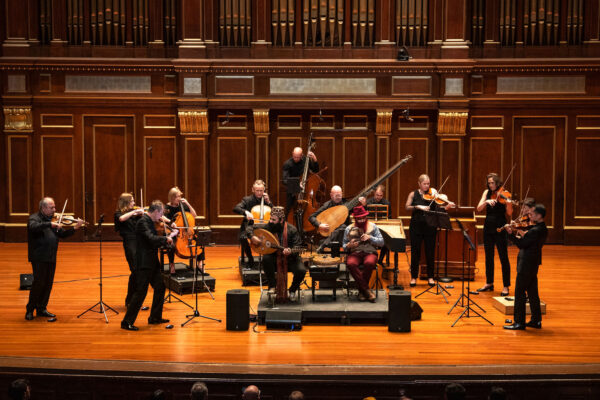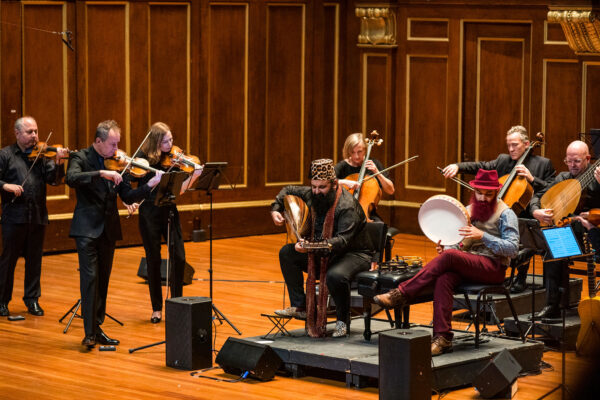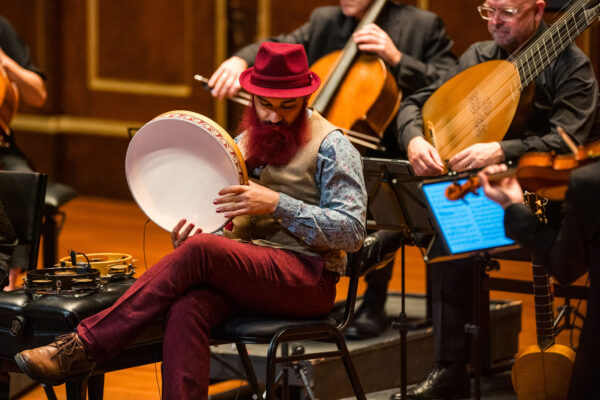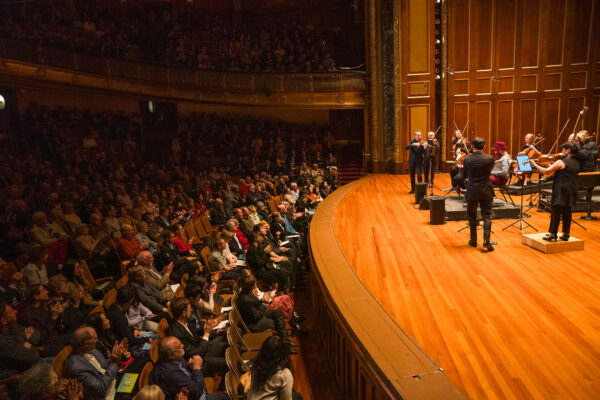MAKING THE OLD NEW
“Make it new,” Ezra Pound urged the poets of the early twentieth century. For Modernists such as T. S. Eliot, Gertrude Stein, H.D., Amy Lowell, and Pound himself, making it new meant innovating to produce something never before seen or read. Yet Boston’s Celebrity Series has now brought us two concerts in which the familiar has been made new through alternations and interactions with music less likely to be familiar to those in the New England Conservatory’s Jordan Hall.
Last week pianist Emmanuel Ax offered a program that featured the dissonant work of Modernist-era composer Arnold Schoenberg alongside fantasias by Ludwig van Beethoven and Robert Schumann, a juxtaposition that brought a fresh perspective to those works. And last night, as part of a U.S. seven-city tour, the Australian Chamber Orchestra, under the energetic and even exuberant direction of violinist Richard Tognetti, brought a thrilling reconsideration of Antonio Vivaldi’s Four Seasons through proximity to music of the Ottoman empire and the compositions of renowned Egyptian-born Joseph Tawadros, who performed on the oud, or Arabic lute.
Joseph sat center stage alongside his brother James Tawadros, a world-class percussionist, who played the riq, a tambourine ringed with cymbals, and the bendir, a shallow hand-held wood-framed drum. The Tawadros brothers were quite distinctive in their appearance. Unlike the members of the chamber orchestra, dressed in conservative black and white, Joseph wore what appeared to be a leopard-print fez and a long maroon scarf draped over his black tunic. Both brothers had full, bushy beards; composer Joseph’s beard and hair were solid black, while James’s was brightly henna’ed to a raspberry red with a matching fedora, maroon pants, and a light blue shirt. But as striking as the brothers were to look at, they were equally interesting to hear. Following the intermission, James performed solo on the tambourine for several minutes, providing a gripping staccato preface to his brother Joseph’s composition “Give or Take.”
The Tawadros brothers performed not only on Joseph’s compositions and the work of Ottoman-era composers Mehmed VI Vahideddin and Tanburi Angeli but also on the Vivaldi selections. Movements from Four Seasons alternated with Tawadros and Ottoman compositions, underscoring the similarities. Tawadros cites chordal progressions, their diatonic nature, and the use of ornamentation and phrasing as shared features of Baroque and Arabic music. Tognetti and Joseph Tawadros were in constant musical communication, Tawadros seated, Tognetti standing nearby, as they leaned into the harmonies of oud and violin. Likewise, James’s supple fingers tattooed a haunting rhythm to give the Four Seasons more than a hint of wild abandon, evoking whirling dervishes, turbulent winds, and the busy streets of bustling Venice.
While Tognetti was notable for his energetic performance (I’m quite sure I saw him leap into the air at least once), the rest of the chamber orchestra leaned into their strings and the music with equal passion and at times what I would describe as a kind of furious ecstasy, whether they were delving into Vivaldi or Tawadros. In addition to the striking appearance of the Tawadros brothers and their instruments, the chamber orchestra of twelve included a long-necked Italian theorbo, played by Simon Martin-Ellis. The stellar performances, along with the dynamic combination of Baroque and Arabic influences, created a unique and inspiring musical experience.
photos by Robert Torres
Australian Chamber Orchestra
Vivaldi’s The Four Seasons
music by Joseph Tawadros
original Ottoman Baroque works
Celebrity Series of Boston
New England Conservatory’s Jordan Hall, 50 Gainsborough St. in Boston
reviewed on October 18, 2024
tour continues; for dates and cities, visit ACO




